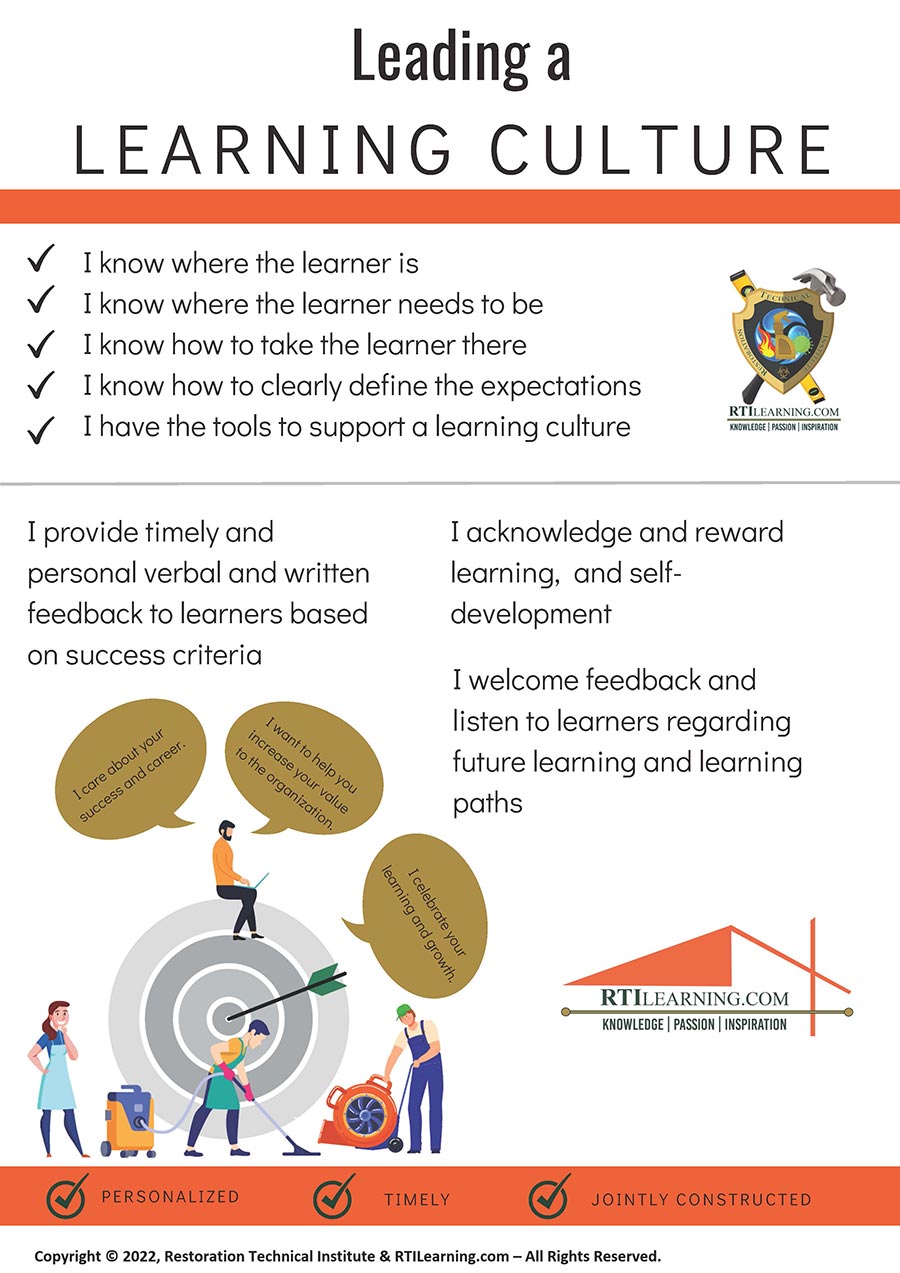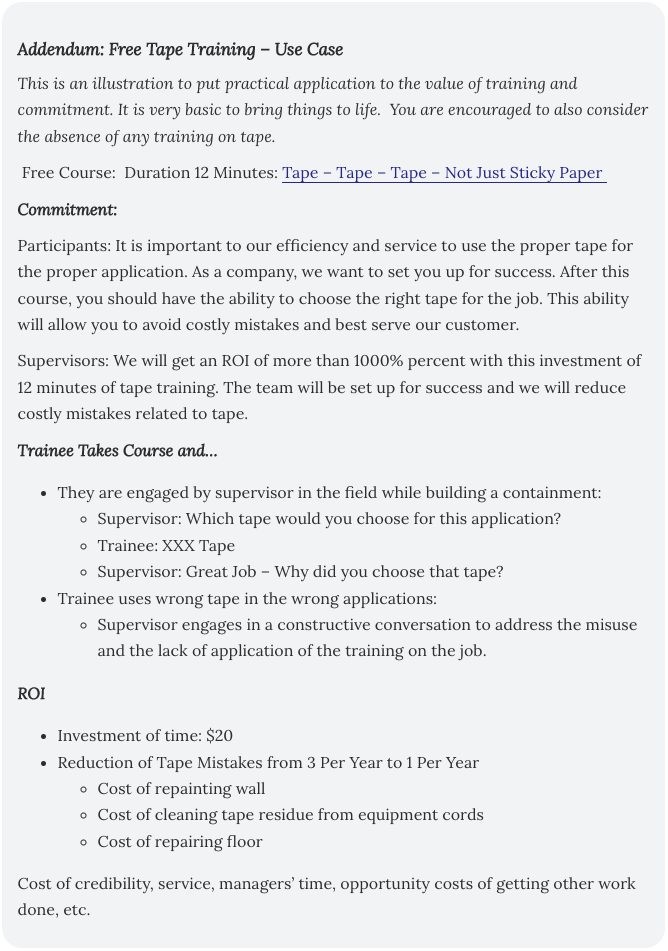 Restoring Success
Restoring Success
By Lisa Lavender M.T.R., M.F.S.R., M.W.R., Phill McGurk
United by a passion for Learning Cultures
I first met Phill McGurk in 2016, and I had the pleasure of tasting Vegemite. “I have to say, it’s an acquired taste.”
Fast forward, Phill and I reconnected and shared our passion for training, employing innovative technology in learning, and our industry in general. We are a global industry, and although there may be different regulations, languages, and units of measure, we are all united by many universal approaches, including our applications to training and engaging industry members. We are united by the need to have a culture of learning where our teams can grow and our companies can succeed.
Phill’s Journey
Learning is a lifelong journey. That’s right. The world is rapidly changing, and the workplace is no exception. It is important to embrace continuing education within the workplace. It benefits individuals and contributes to our organization’s overall success.
In today’s fast-paced world, the only constant is change. Industries are rapidly evolving, technology is advancing at a breakneck speed, and new, innovative approaches are replacing the skills we once thought were indispensable. As a result, the need for continual education within the workplace has never been more critical. By embracing a mindset of lifelong learning, we not only adapt to these changes but also drive our organizations forward. This allows us to remain competitive in this ever-changing landscape.
Continual education is not only about acquiring new skills or knowledge; it’s also about fostering a culture of growth and development. When we commit to learning and self-improvement, we inspire those around us to do the same. This collaborative atmosphere creates a thriving workplace where employees feel empowered and engaged. This translates into job satisfaction, increased productivity, and tremendous success for the organization.
As we consider the journey of learning, let us remember that education is not just a means to an end but a lifelong pursuit that enriches our lives, workplace, and community. By embracing continual education within the workplace, we create a brighter future for ourselves and the generations to come.
The Journey and Commitment
If you have struggled with enjoying the benefits of a Learning Culture in your organization, the solution may be found in commitment. “Only one in four senior managers report that training was critical to business outcomes.” (Harvard Business Review, 2016) In consideration of this sad statistic, we can gain insight into the element of commitment.
Robert O. Brinkerhoff’s High-Performance Learning Journey presents a curriculum design approach which uses an engineered process based on over 40 years of research. He notes that commitment is one of the most critical elements related to overcoming performance barriers in training outcomes. It should also be noted that Brinkerhoff’s design approach is focused on performance outcomes and linked to business rationale.
In Improving Performance through Learning, A Practical Guide to Designing High-Performance Learning Journeys, by Robert O. Brinkerhoff, Anne M. Apking, and Edward W. Boon, it is noted that when creating a High-Performance Learning Journey (HPLJ), the first core element is commitment. The authors continue to outline the groups whose commitment level will have an impact on training outcomes:
- Participant Commitment: Are the members of your organization engaged and excited to learn? Is there a connection to their performance and opportunities to grow in your organization and industry?
- Managers and Supervisors: In a broad sense, consider the commitment of the leadership. There are a wide variety of performance barriers post-training that link back to the leadership. A few examples include: continuous feedback, the opportunity to apply in the workplace, and even the amount of training and resources available.
- Peer Commitment: When our peers to do not engage with us, or worse, apply “the way we have always done it” pressure, it will adversely impact the learning culture and diminish the return on training initiatives.
As we consider ways to build a learning culture, we must start with getting an unwavering commitment from all key people.
Using a Career Pathway to Build a Training Culture for Positive Returns
Building a training culture is essential for ensuring that employees have the skills and knowledge needed to make positive returns. The best training includes regular reviews and assessments so that professional development and improvement can take place. Companies must also reward those who demonstrate improved competencies through increased responsibility or compensation to ensure employees understand the value of training and its impact on their work. Make it a part of your culture that instead of asking for a raise, we ask, “How can I increase my value?” (Read More on that here.)
Taking time to nurture and develop existing staff through mentorship programs is key for successful engagement. This allows employees to familiarize themselves with new concepts while gaining the levels of confidence needed throughout their careers.
Mentors should provide constructive feedback, allowing progression towards meeting challenges within the workplace while also providing guidance and support if mistakes occur. Improving already established relationships between management and staff paves the way for a successful transition into a positive training culture.
| ▶ How to Train Someone: Steps.
Tips to Increase Commitment and Build a Learning Culture
Building a learning culture and commitment to learning is a key factor for long-term success. There are several ways to improve commitment from the top down and ensure that all team members feel part of something bigger.
Tips:
- Focus on core values,
- Provide recognition and rewards for successes,
- Set goals and expectations,
- Communicate and provide continuous feedback,
- Invest in training and development,
- Promote collaboration,
- Foster autonomy and empowerment,
- Include training and development in job responsibilities and performance evaluations,
- Understand and utilize the concept of ROI in training, Return On Investment,
- Tie training to performance outcomes with a business rationale (HPLJ),
- Download Quick Tips:

These tips will help create an environment that promotes personal growth and overall organizational effectiveness.
Utilizing Technology
As advancements in technology continue to unfold, using innovative tools fit for the building restoration industry is only going to grow in its potential. We have come a long way from the traditional methods of completing projects; using new technologies will take us to an even more promising futures.
May getting commitment to training in your organization bring you much Restoring Success.


 Restoring Success
Restoring Success








